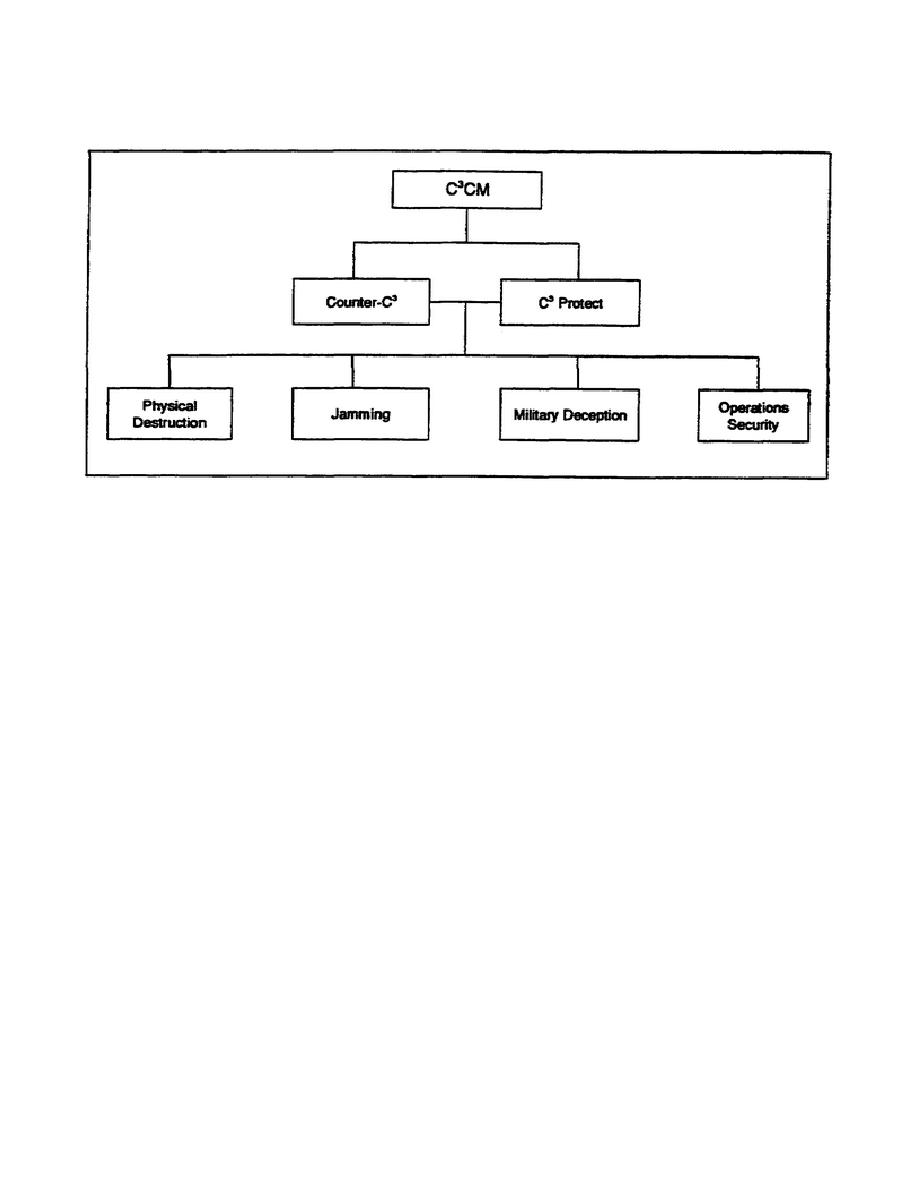
C3CM Components. The C3CM components are physical destruction, jamming, military
3.
deception, and OPSEC. They apply to both C3 Protect and Counter-C3 actions (Figure 2-1).
Figure 2-1. Four components of C3CM.
Physical destruction is used in both C3 Protect and Counter-C3 operations. Destroying
a.
enemy jammers, fire direction centers, and deception units protects friendly C3 capabilities from lethal
and nonlethal attack and deception operations. Using fires to attack enemy C3 systems (such as sensor
and signal centers) can prevent an enemy from planning and executing Counter-C3 actions.
Jamming is a form of nonlethal fire support. It helps C3 protection by defending and
b.
screening friendly C3. In Counter-C3, jamming is used to disrupt and deceive threat C3. Electronic
warfare (EW) assets respond to jamming requests based on the priorities of the joint commander and his
J3. In the Counter-C3 role, the joint commander identifies the functions to be degraded or destroyed.
These include enemy jammers, reconnaissance unit, and command posts. The J2 decides which
collection assets are needed to locate the C3 targets. The J3 and the fire support element (FSE) decide
which destruction assets are needed to destroy them.
c.
Tactical military deception operations target the enemy decision maker. The major threat
to joint force operations is the ability of enemy commanders to make the most advantageous use of their
forces. This ability depends on an enemy's ability to see the battlefield. The joint force can achieve
tactical advantage over an enemy in planning, directing, and conducting combat operations by using
battlefield deception. Using deception can enhance surprise. If not used, surprise is achieved only about
50 percent of the time.
SS0136
2-4



 Previous Page
Previous Page
